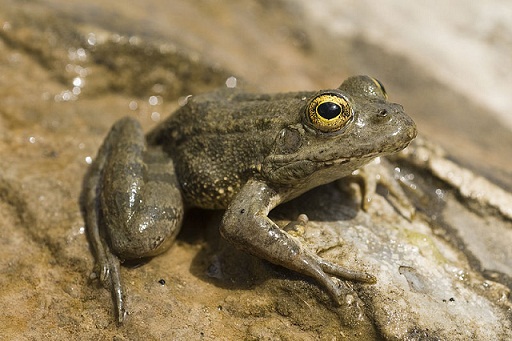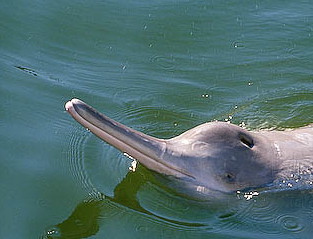Karpathos Frog is one of the most isolated and rarest amphibian species found in Europe.
The Scientific Name : Pelophylax(Rana) cerigensis
Where is it found?
The Karpathos Frog is currently found only in the Karpathos island of Greece situated in the Carpathian Sea of the Mediterranean. Till mid 90s the frog was believed to be found in the near by Rhodes island too. But later confirmed the species to be endemic to the Karpathos island only. In the island also, the frog is very restricted to just an single river system of area at most 100 square km(while the total area of the island is 350 square km) on the northern part of the island, near Olympos. The last population of the frog is found in the water sources of high altitude and mountains of Olympos. The Karpathos Forg prefers still or very slow running water.
How does it live?
The Karpathos Forg is mostly aquatic. Breeding and larval development of the Karpathos Frog takes place in their habitat waterbodies. The frog is probably carnivourous like other water frogs.
How does it look?
The Karpathos Frog is considered as a mid-sized frog, the adults can grow upto 7 cm in length. It has light brownish gray to olive color dorsal, with or without light brown spots. The venter is usually cream-colored with gray spots. The males have paired external lateral vocal sacs which are dark gray in color.
What are the threats?
Habitat loss is the greatest threat to the Karpathos Forgs. They are very sensitive to any habitat change. Any water pollution may be fatal to the species. karpathos is a dry island and in recent days there is a scarcity of fresh water sources due to excessive abstraction of it for agriculture and industries. The species is vulnerable to climatic change too which is a global phenomenon now. Wild fires are are considered as a threat to the species. Though the frog population site is remote, the species may go extinct anytime because of its small single site distribution of population.
Conservation Efforts
The Karpathos Frogs were adundant in the island in 1960s, the sitings of the frog have reduced dramatically in recent days. The government has declared protected areas for the Karpathos frogs. But not many organizations are known to have been working on the conservation of the species. There are no captive insurance population too. There were very little studies and researches done on the species and its conservation in the past. There is an urgent need to know more about the frog and provide proper monitoring and protection to its habitat.






Recent Comments